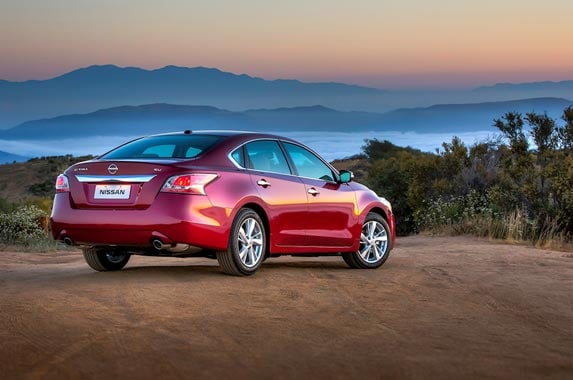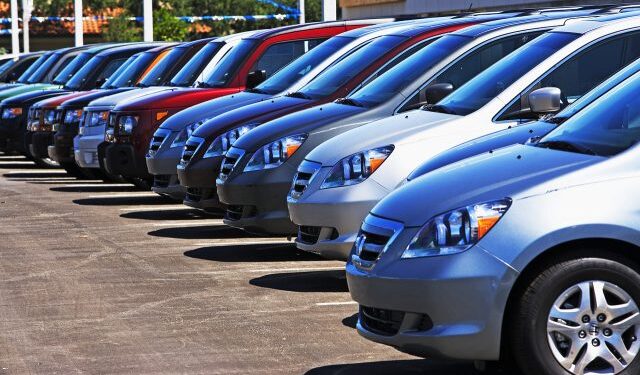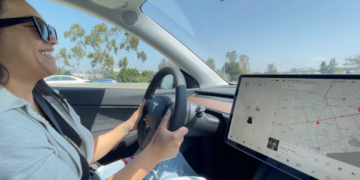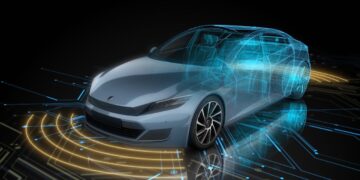In the dynamic automotive market, the allure of a brand-new vehicle often competes with the practical wisdom of choosing used cars. Far from being simply a compromise, opting for pre-owned wheels can be a remarkably smart decision, offering significant financial advantages, a wider array of choices, and often, better value for money. The market for previously owned vehicles is vast and sophisticated, equipped with tools and resources that empower buyers to make informed decisions. This isn’t just about saving money; it’s about making a savvy investment, accessing a broader selection, and understanding the true cost of car ownership, ultimately leading to a more advantageous purchase.
Why Used Cars Make Sense

The decision to buy a used car is increasingly popular, driven by compelling economic and practical benefits that often outweigh the perceived advantages of purchasing new. Understanding these benefits is key to appreciating the smart choice in pre-owned vehicles.
A. Significant Cost Savings:
* Depreciation Avoidance: The most substantial financial benefit. New cars suffer their steepest depreciation (often 20-30%) in the first year alone. By buying used, you let the first owner absorb this massive loss, acquiring a vehicle that has already taken its biggest financial hit.
* Lower Purchase Price: Directly linked to depreciation, the actual sale price of a used car is considerably lower than its new counterpart, freeing up capital for other investments or reducing loan burdens.
* Reduced Insurance Premiums: Insurance costs are typically lower for used cars because their replacement value is less, resulting in more affordable premiums for comprehensive and collision coverage.
* Lower Registration Fees and Taxes: In many regions, vehicle registration fees and sales taxes are calculated based on the car’s declared value, which is naturally lower for a used vehicle, leading to further savings.
* Avoidance of Hidden Fees: New car purchases often come with various mandatory add-on fees (destination charges, documentation fees, etc.) that are less prevalent or negotiable in the used car market.
B. Broader Selection and Variety:
* Access to More Models: The used car market offers a vast inventory spanning multiple model years, including vehicles that might no longer be in production as new. This provides a significantly wider range of makes, models, trims, and features to choose from.
* Luxury Within Reach: A used luxury vehicle or a higher trim level of a standard model, which might be financially out of reach when new, becomes much more affordable on the used market. This allows buyers to access premium features or brands they otherwise couldn’t.
* Specialty Vehicles: For those seeking specific classic models, unique modifications, or niche vehicles no longer produced, the used market is the only viable option.
C. Reliability and Longevity:
* Improved Quality: Modern cars are built to last. The quality and reliability of vehicles produced in the last decade have dramatically improved, meaning a well-maintained used car can offer many years of trouble-free service.
* Vehicle History Reports: Tools like Carfax and AutoCheck provide comprehensive vehicle history reports, detailing past ownership, accident history, service records, and odometer rollbacks, offering transparency and peace of mind.
* Certified Pre-Owned (CPO) Programs: Many manufacturers offer CPO programs for used vehicles. These cars undergo rigorous inspections, are often refurbished, and come with extended warranties and roadside assistance, bridging the gap between new and used by offering factory-backed reliability.
D. Environmental Considerations:
* Reduced Manufacturing Impact: Buying a used car means no new resources are consumed for manufacturing, and no additional emissions are generated during the production process, contributing to a smaller environmental footprint compared to buying new.
* Extended Lifespan: Keeping vehicles on the road for longer, rather than replacing them frequently, reduces the overall waste stream associated with vehicle disposal and manufacturing.
E. Lower Financial Risk:
* Less Negative Equity: Due to slower depreciation after the initial years, used cars are less likely to experience negative equity (owing more on the loan than the car is worth), which can trap owners in a cycle of debt.
* Predictable Ownership Costs: With detailed service records and vehicle history reports, predicting future maintenance needs for a used car can be more accurate than for an unknown new model.
Smart Buying Strategies for Used Cars
The used car market can be complex, but with the right approach and diligent research, buyers can navigate it successfully and secure an excellent deal.
A. Define Your Needs and Budget:
* Purpose of the Car: Determine how you’ll primarily use the vehicle (daily commute, family transport, off-roading, work). This will guide your search for body type, fuel efficiency, and features.
* Realistic Budget: Establish a clear budget that includes not just the purchase price, but also potential taxes, registration, insurance, and an allowance for immediate maintenance or unforeseen repairs.
* Research Models and Years: Identify specific makes and models known for reliability and good resale value within your budget. Research common issues for particular model years.
* Fuel Economy: Consider long-term fuel costs, especially with fluctuating gas prices.
B. Thorough Research and Due Diligence:
* Online Marketplaces: Utilize reputable online platforms (e.g., Edmunds, CarGurus, Autotrader, local dealer websites, Craigslist, Facebook Marketplace) to browse inventory, compare prices, and filter by criteria.
* Vehicle History Reports (VHR): Always obtain a Carfax or AutoCheck report. These reports provide vital information on accidents, salvage titles, flood damage, odometer tampering, service history, and previous ownership. This is non-negotiable for serious buyers.
* Pricing Guides: Consult pricing guides like Kelley Blue Book (KBB) or NADAguides to understand fair market value based on mileage, condition, and features. This helps in negotiating.
* Recall Checks: Verify if there are any outstanding safety recalls for the specific VIN (Vehicle Identification Number) on the manufacturer’s website or NHTSA database.
C. Inspecting the Vehicle:
* Initial Visual Inspection:
* Exterior: Look for uneven panel gaps, mismatched paint (signs of accident repair), rust, tire wear (uneven wear can indicate alignment issues), and fluid leaks under the car.
* Interior: Check for excessive wear and tear on seats, carpets, pedals; ensure all lights, gauges, AC, heating, power windows, and locks work. Check for strange odors.
* Under the Hood: Look for clean fluid levels, corrosion on battery terminals, frayed belts, and any signs of leaks or unusual modifications.
* Test Drive:
* Cold Start: Ensure the engine starts easily when cold.
* Engine Performance: Listen for unusual noises (knocks, squeals), check for smooth acceleration, proper gear shifting (automatic or manual), and responsive braking.
* Steering and Suspension: Check for pulling to one side, excessive vibration, or unusual noises over bumps.
* Brakes: Ensure firm pedal feel, no grinding noises, and straight stopping.
* Electronics: Test all infotainment, navigation, and driver-assist features.
* Pre-Purchase Inspection (PPI): This is the single most important step for buying a used car. Have an independent, trusted mechanic (not one recommended by the seller) thoroughly inspect the vehicle. They can identify hidden mechanical issues, signs of deferred maintenance, or undisclosed accident damage that a non-expert would miss.
D. Negotiation and Purchase:
* Be Prepared: Use your research (VHR, pricing guides, PPI findings) as leverage in negotiations.
* Know Your Walk-Away Price: Decide your maximum offer before you start negotiating and be willing to walk away if the price isn’t right.
* Payment Method: Consider how you’ll pay (cash, loan). Get pre-approved for a loan if financing.
* Paperwork: Ensure all titles, registration, bill of sale, and warranty documents are correctly filled out and transferred.
* Warranty Options: Understand if the car comes with any remaining manufacturer warranty, a dealer’s limited warranty, or if an extended warranty makes sense for your specific purchase.
Navigating Seller Types

The source from which you purchase a used car can significantly impact the buying experience, the vehicle’s condition, and the level of protection offered.
A. Dealerships:
* Franchise Dealerships (New Car Dealerships):
* Pros: Often offer Certified Pre-Owned (CPO) programs with warranties, a larger inventory, financing options, and a professional sales process. They have service departments for post-sale support.
* Cons: Generally higher prices due to overheads and markups, sales pressure, and sometimes less flexibility in negotiation.
* Independent Used Car Dealerships:
* Pros: Often offer a wider variety of makes and models, potentially more flexible pricing, and might specialize in certain types of vehicles.
* Cons: Quality can vary widely; do more research on the dealer’s reputation. Warranties may be third-party or limited. Less standardized processes.
B. Private Sellers:
* Pros: Often offer the lowest prices because there’s no dealer markup. More room for negotiation. You can often get a more detailed history directly from the previous owner.
* Cons: No warranties (sold “as-is”). More responsibility for research, inspection, and paperwork. Higher risk of encountering undisclosed issues or scams. Limited recourse if problems arise after the sale.
C. Online Used Car Retailers (e.g., Carvana, Vroom, Shift):
* Pros: Highly convenient “buy online, deliver to your door” model. Often offer a limited return policy. Pre-inspected vehicles. Streamlined financing.
* Cons: Cannot physically inspect the car before delivery (though photos and 360-degree views are provided). Limited negotiation. Returns, while offered, can be cumbersome.
* Growth: This segment has seen significant growth, especially post-pandemic, due to its convenience and transparency, though inventory might be less diverse than traditional dealer lots.
D. Auctions (Public and Dealer-Only):
* Pros: Potential for very low prices.
* Cons: High risk. Vehicles are sold “as-is” with no warranties, and often no opportunity for test drives or thorough inspections. Primarily for experienced buyers or dealers.
E. Other Sources:
* Rental Car Companies: Often sell off their fleet after a certain mileage or age. Vehicles are typically well-maintained but might have higher mileage and wear from multiple drivers.
* Lease Returns: Vehicles coming off lease are often in good condition and have low mileage, but can be priced higher.
* Fleet Sales: Companies selling off their corporate vehicles, which can be well-maintained but might have high mileage.
The Certified Pre-Owned (CPO) Advantage
For many buyers, Certified Pre-Owned (CPO) programs offer an appealing middle ground between buying new and buying a standard used car.
A. What is CPO?
* CPO vehicles are used cars that have undergone a rigorous, multi-point inspection (often 100-300 points) by the manufacturer or authorized dealership.
* They must meet strict age and mileage criteria set by the manufacturer.
* They are typically refurbished using genuine manufacturer parts to address any issues found during inspection.
B. Key Benefits of CPO:
* Extended Warranty: The primary benefit. CPO vehicles come with an extended manufacturer-backed warranty that goes beyond the original factory warranty, offering new-car-like protection for a longer period.
* Roadside Assistance: Often includes roadside assistance for the duration of the CPO warranty.
* Lower Financing Rates: Manufacturers sometimes offer special, lower interest rates for CPO vehicles, making financing more attractive.
* Vehicle History Report: All CPO vehicles come with a verified vehicle history report.
* Higher Quality Assurance: The rigorous inspection and reconditioning process provides a higher level of confidence in the vehicle’s condition and reliability.
* Less Depreciation Shock: While still used, they’ve absorbed the initial depreciation, offering better value than new.
C. Considerations for CPO:
* Higher Price: CPO vehicles are generally more expensive than non-CPO used cars of the same make and model due to the added benefits and reconditioning costs.
* Brand Specific: CPO programs are run by individual manufacturers, so the exact terms, warranty length, and inspection points vary by brand.
* Limited Selection: You’re limited to vehicles of that specific brand, and usually only recent model years.
The True Cost of Used Car Ownership
Buying a used car is just the first step. Understanding the ongoing costs of ownership is crucial for long-term financial planning.
A. Maintenance and Repairs:
* Regular Servicing: All cars require routine maintenance (oil changes, tire rotations, fluid checks). This is a predictable cost.
* Unforeseen Repairs: Used cars, by their nature, may eventually require more repairs than a brand-new vehicle. Budgeting for this (e.g., an emergency fund or extended warranty) is wise.
* Parts Availability: For older or less common models, parts can become harder to find or more expensive.
B. Fuel Costs:
* Fuel Efficiency: Consider the car’s miles per gallon (MPG) rating, as this is a recurring cost that can add up significantly over time.
* Fuel Type: Whether the car requires regular, mid-grade, or premium gasoline will impact your budget.
C. Insurance Premiums:
* Coverage Type: The type and amount of insurance coverage (liability, collision, comprehensive) will determine premiums. Used cars usually have lower premiums than new.
* Driver Profile: Age, driving record, location, and credit score also influence insurance costs.
D. Registration and Taxes:
* Annual Renewal: Most regions require annual registration renewals and potentially vehicle property taxes, which are recurring costs.
E. Depreciation (Continued):
* While the steepest depreciation occurs early, used cars continue to depreciate, albeit at a slower rate. This is an “opportunity cost” if you plan to resell or trade in the vehicle.
F. Tires:
* Tires are a significant consumable. Consider the cost of replacing them every few years, especially for larger trucks or performance vehicles.
G. Cleaning and Detailing:
* Keeping the car clean and well-maintained preserves its value and enhances the ownership experience.
Conclusion
The market for used cars offers a compelling proposition for discerning buyers seeking exceptional value, broader choice, and significant financial advantages. Far from being a mere compromise, acquiring pre-owned wheels is a strategic decision that allows you to bypass the steepest depreciation, access premium features within budget, and contribute to a more sustainable consumption cycle. While navigating this market demands diligence, armed with thorough research, a keen eye for inspection, and the invaluable aid of vehicle history reports and independent mechanics, buyers can confidently secure a reliable and rewarding vehicle. Ultimately, the smart choice in a used car is not just about the vehicle itself, but about the financial prudence, environmental consciousness, and peace of mind it brings, proving that the road to smart car choices often begins with a journey to the pre-owned lot.












